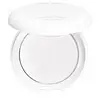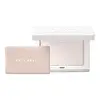What's inside
What's inside
 Key Ingredients
Key Ingredients

 Benefits
Benefits

 Concerns
Concerns

 Ingredients Side-by-side
Ingredients Side-by-side

Synthetic Fluorphlogopite
CI 77220
Cosmetic ColorantMagnesium Myristate
Hdi/Trimethylol Hexyllactone Crosspolymer
Octyldodecyl Stearoyl Stearate
EmollientPolymethylsilsesquioxane
Squalane
EmollientMica
Cosmetic ColorantCoconut Acid
Cleansing1,2-Hexanediol
Skin ConditioningCaprylyl Glycol
EmollientSilica
AbrasiveSalvia Hispanica Seed Extract
EmollientLeuconostoc/Radish Root Ferment Filtrate
AntimicrobialPhenoxyethanol
PreservativeSodium Hyaluronate
HumectantCI 77742
Cosmetic ColorantCI 77492
Cosmetic ColorantSynthetic Fluorphlogopite, CI 77220, Magnesium Myristate, Hdi/Trimethylol Hexyllactone Crosspolymer, Octyldodecyl Stearoyl Stearate, Polymethylsilsesquioxane, Squalane, Mica, Coconut Acid, 1,2-Hexanediol, Caprylyl Glycol, Silica, Salvia Hispanica Seed Extract, Leuconostoc/Radish Root Ferment Filtrate, Phenoxyethanol, Sodium Hyaluronate, CI 77742, CI 77492
 Reviews
Reviews

Ingredients Explained
These ingredients are found in both products.
Ingredients higher up in an ingredient list are typically present in a larger amount.
1,2-Hexanediol is a synthetic liquid and another multi-functional powerhouse.
It is a:
- Humectant, drawing moisture into the skin
- Emollient, helping to soften skin
- Solvent, dispersing and stabilizing formulas
- Preservative booster, enhancing the antimicrobial activity of other preservatives
This ingredient is a powder used to improve texture, slip, and give products a silky texture.
Mica is a naturally occurring mineral used to add shimmer and color in cosmetics. It can also help improve the texture of a product or give it an opaque, white/silver color.
Serecite is the name for very fine but ragged grains of mica.
This ingredient is often coated with metal oxides like titanium dioxide. Trace amounts of heavy metals may be found in mica, but these metals are not harmful in our personal products.
Mica has been used since prehistoric times throughout the world. Ancient Egyptian, Indian, Greek, Roman, Aztec, and Chinese civilizations have used mica.
Learn more about MicaSilica, also known as silicon dioxide, is a naturally occurring mineral. It is used as a fine, spherical, and porous powder in cosmetics.
Though it has exfoliant properties, the function of silica varies depending on the product.
The unique structure of silica enhances the spreadability and adds smoothness, making it a great texture enhancer.
It is also used as an active carrier, emulsifier, and mattifier due to its ability to absorb excess oil.
In some products, tiny microneedles called spicules are made from silica or hydrolyzed sponge. When you rub them in, they lightly polish away dead skin layers and enhance the penetration of active ingredients.
Learn more about SilicaSynthetic Fluorphlogopite is the synthethic version of mica. It consists of fluorine, aluminum and silicate.
Synthetic Fluorphlogopite is used to add volume to products.
It is considered non-irritating on the skin.
Learn more about Synthetic Fluorphlogopite